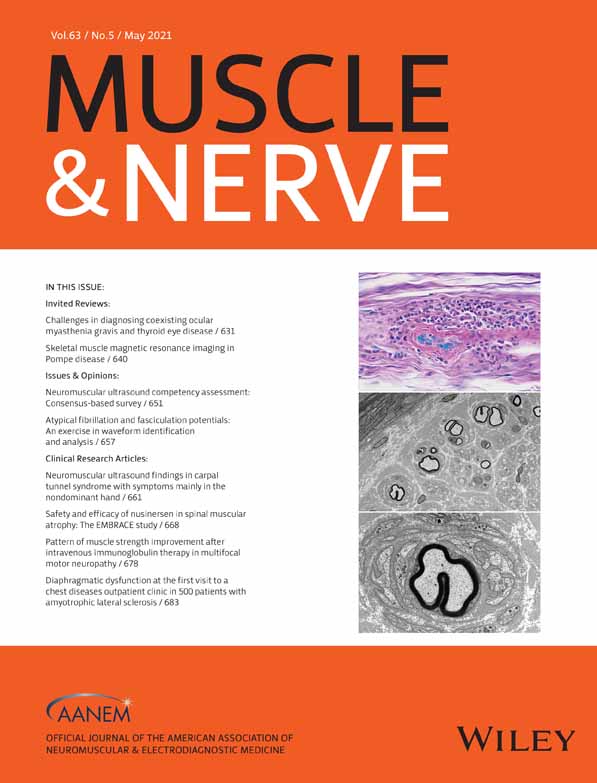Diaphragmatic dysfunction at the first visit to a chest diseases outpatient clinic in 500 patients with amyotrophic lateral sclerosis
Abstract
Introduction
In this study, we aimed to evaluate diaphragmatic dysfunction (DD) by using a practical approach in patients with amyotrophic lateral sclerosis (ALS) at the first visit to a chest diseases outpatient clinic.
Methods
Patients with ALS seen in our outpatient clinic for the past 5 y and followed up for at least 1 y, were retrospectively evaluated. Having at least one of the following three criteria was accepted as DD: (a) paradoxical abdominal movement (PAM), (b) sitting-supine forced vital capacity (FVC) difference ≥ 20%, (c) sitting-supine arterial oxygen saturation measured by pulse oximetry (SpO2) difference ≥ 4%. Respiratory symptoms, arterial blood gas analysis, sleep studies, noninvasive mechanical ventilation use, and mortality were recorded.
Results
Five-hundred patients with ALS were included (female/male: 220/280, age: 58.9 ± 11.3 y). Of the patients, 22.8% had daytime hypercapnia. DD was observed in 55% of the patients (PAM in 112, sitting-supine FVC difference ≥ 20% in 50, and sitting-supine SpO2 difference ≥ 4% in 113 patients). Of the patients with DD, 31.6% (n = 87) had no respiratory symptoms, 46.4% had FVC > 70% and 33.5% had FVC <50%. Nocturnal hypoxemia (sleep time spent with SpO2 < 90% ≥30%) was present in 59.7%, and all patients with nocturnal hypoxemia had DD. Obstructive sleep apnea (8 severe, 14 moderate, 39 mild) was detected in 55% of the patients with polysomnography (n = 61) or polygraphy (n = 50). During follow-up, 52.2% of the patients died. Mean survival time was shorter in patients with DD (P < .001).
Conclusion
Paradoxical abdomimal movement (PAM), sitting-supine SpO2 difference ≥ 4% and sitting-supine FVC difference ≥ 20% are indicators of DD, which should be routinely evaluated at every outpatient visit.
CONFLICT OF INTEREST
None of the authors has any conflict of interest to disclose.
Open Research
DATA AVAILABILITY STATEMENT
Author elects to not share data.




